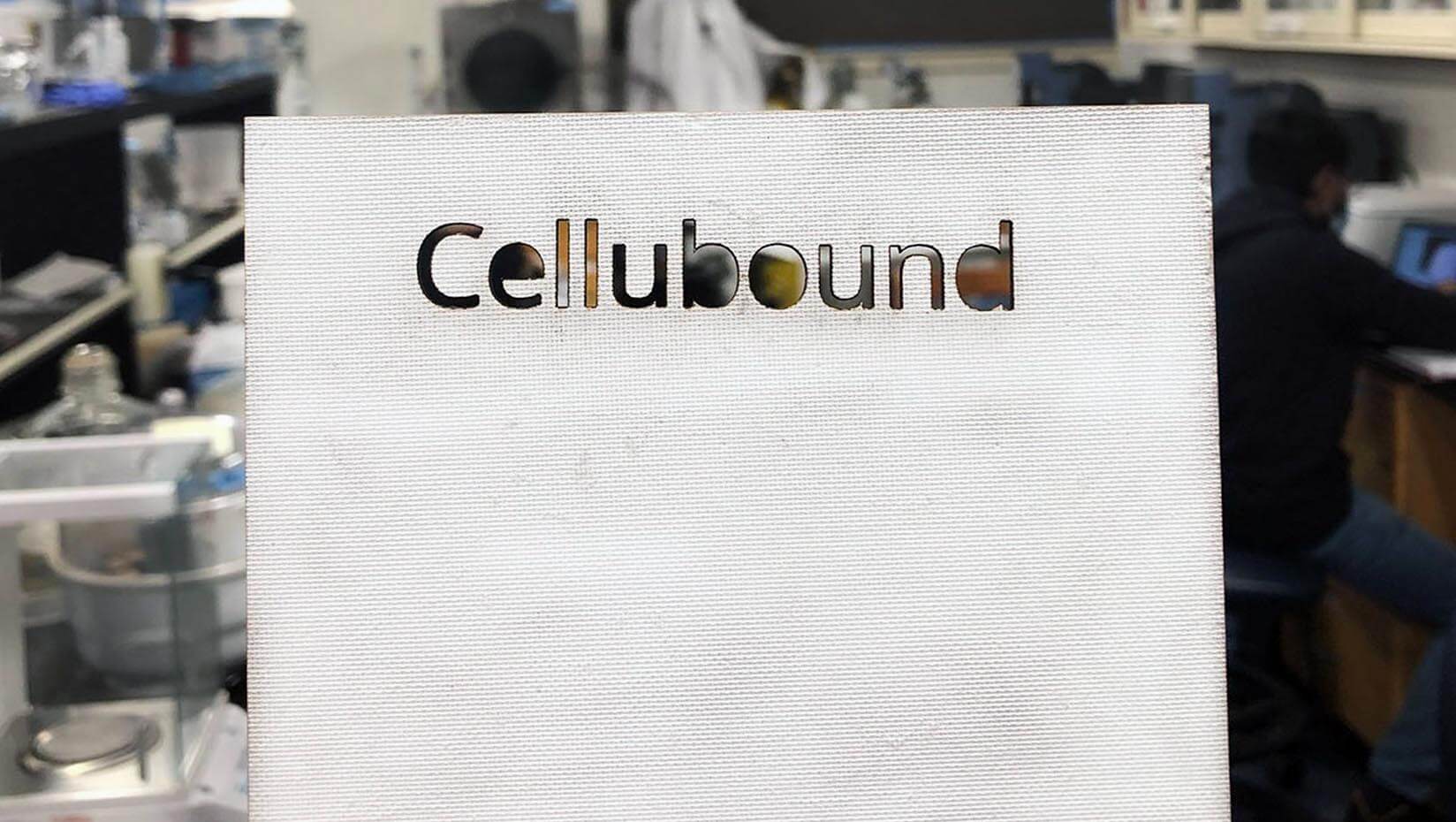
UMaine receives patent for composite laminates bound with cellulose nanofibers
The University of Maine has been issued a patent for a process to create strong composite laminates that are bound with cellulose nanofibrils (CNF). This technology, called Cellubound™, is part of UMaine’s widening patent portfolio of strong, environmentally friendly products bound with CNF.
The process developed by UMaine researchers involves soaking sheets of paper in a CNF slurry, then layering the soaked sheets together and using a heated press to remove the water and bond the layers. The resulting product, made entirely of paper and uniquely impregnated with CNF, is strong, stiff and board-like, with the potential to replace plastics in a wide range of applications. It is also biodegradable, compostable, requires relatively little energy to produce, and the paper used for layering could be recycled from the waste stream.
The UMaine inventors are associate professor of renewable nanomaterials Mehdi Tajvidi and professor of chemical and biomedical engineering Doug Bousfield. The funding that led to this invention came from the USDA Agricultural Research Service. Both researchers are working to develop related technology as part of P3Nano, a public-private partnership founded by the U.S. Endowment for Forestry and Communities and the U.S. Forest Service.
Tajvidi and Bousfield say they have only begun to explore the possibilities for products that could be made using the technique, which they have so far only tested on a small scale. The layering aspect allows for control over the thickness of the finished product, and cross-directional folding or rolling of the layers also expands the available options. When the product is wet, it can be pressed into a mold, creating a seamless shape after drying.
“There is a lot of flexibility in what you could make,” says Tajvidi. “One of the first things we thought of was interior door panels for the automotive industry, but you could use it in packaging, for hard containers, or even a flower pot that you could actually plant in the ground.”
A major advantage is the laminate’s strength, which has been shown to meet or exceed that of many conventional plastic products. The researchers say this strength is due to fully immersing the paper into the CNF slurry before stacking the layers.
“The paper is porous and the CNF particles are small, so they can get into the pores,” says Bousfield. “Then, once you press them, the same bonding that happens on the surface happens in the core of every single layer, too. Every single layer is actually bonded to the next one and also reinforced internally, and that’s why it makes the total thing stronger. When you coat CNF onto paper and laminate it, you don’t get quite that strength.”
By using CNF slurry as the binder, energy-intensive initial drying steps to extract the fibers are not required. The drying process to cure the product involves a relatively short cycle.
“We basically preserve the nanoscale dimensions of nanocellulose in the product,” Tajvidi says. “If you look at our product under a microscope, you see the individual nanoparticles there. And, because we skip the initial drying process, it’s much more economically feasible than doing anything else with nanocellulose that requires prior drying.”
UMaine’s Process Development Center (PDC), a commercial-scale pilot plant on campus devoted to pulp and paper research and development, is the only publicly accessible facility in the United States that can manufacture CNF at a rate of one ton per day. Planned equipment upgrades will soon boost nanocellulose production. The center supplies CNF and cellulose nanocrystals (CNC) to academic, public and private research groups interested in evaluating and developing applications for these materials, and UMaine is a global leader in related research, contributing to its reputation as the heart of Nanocellulose Valley. The university also is a partner in FOR/Maine, a cross-sector collaboration between industry, communities, government, education, and nonprofits that seeks to innovate and grow Maine’s forest economy.
The University of Maine is actively seeking a development partner for the technology. The patent number is U.S. 10,875,284.
Contact: Ashley Forbes, ashley.forbes@maine.edu
